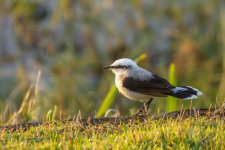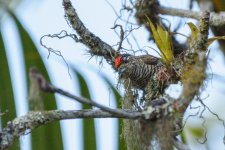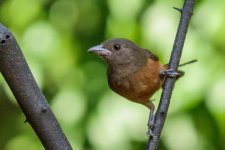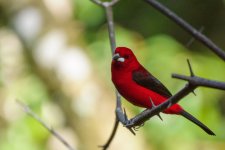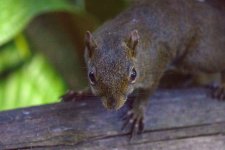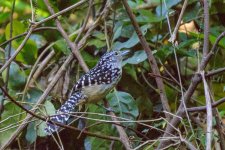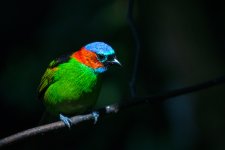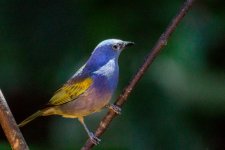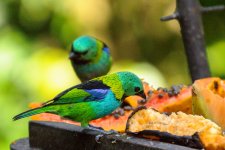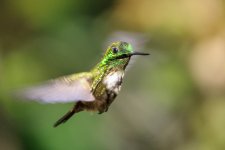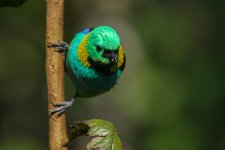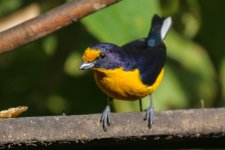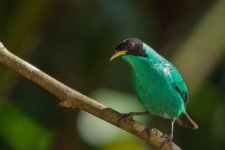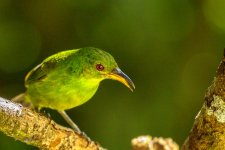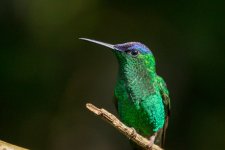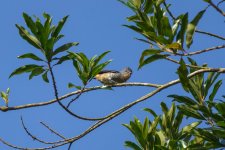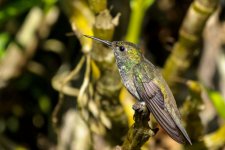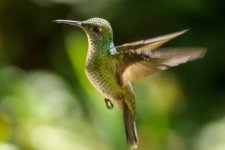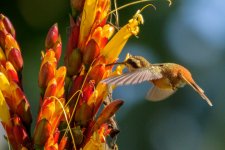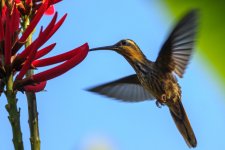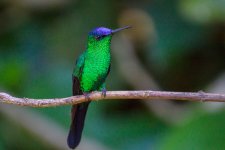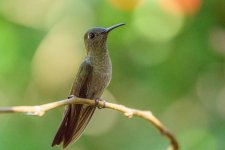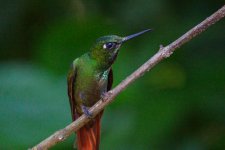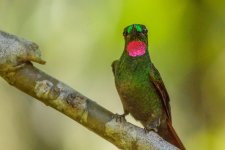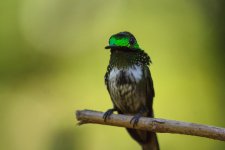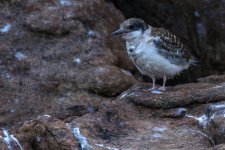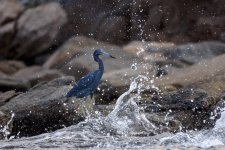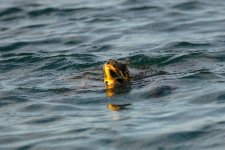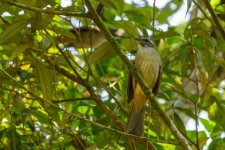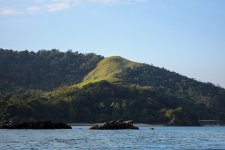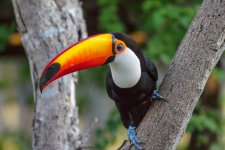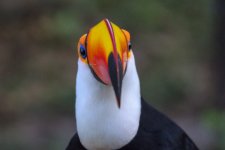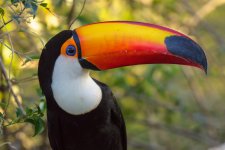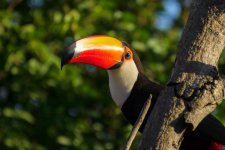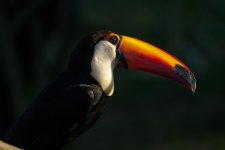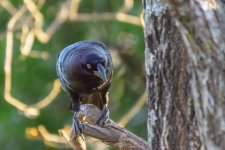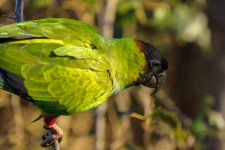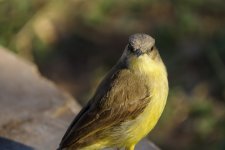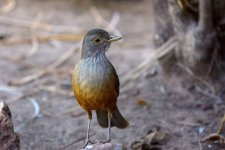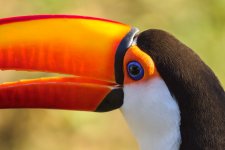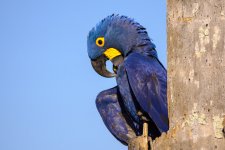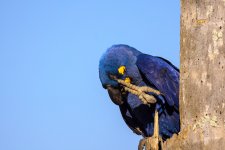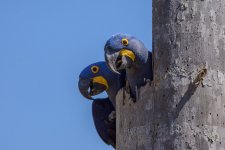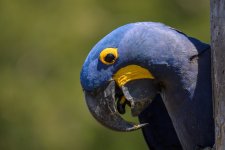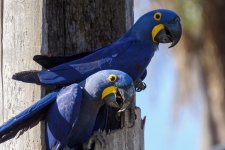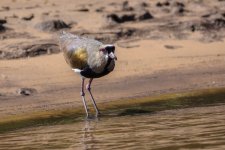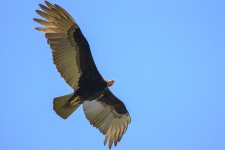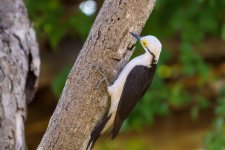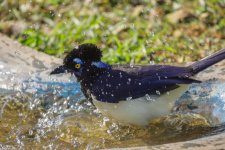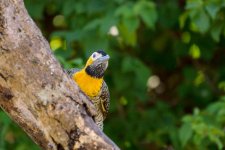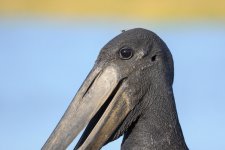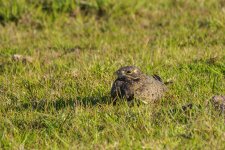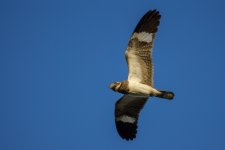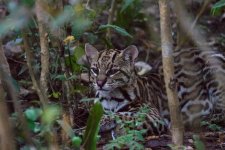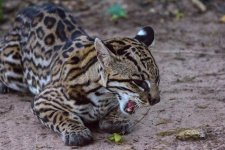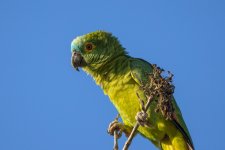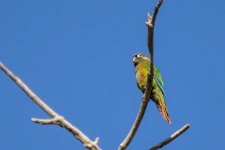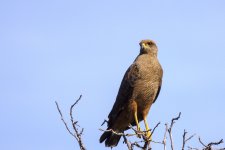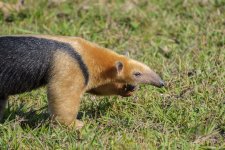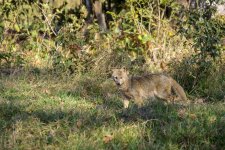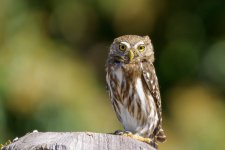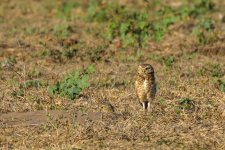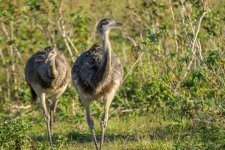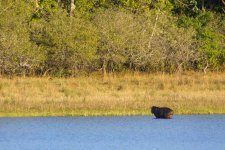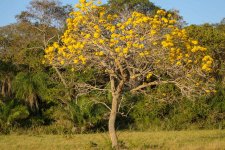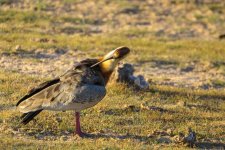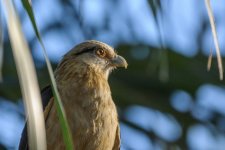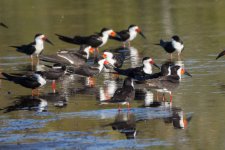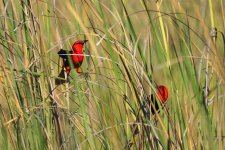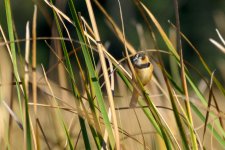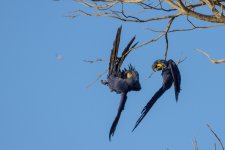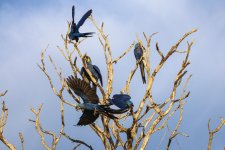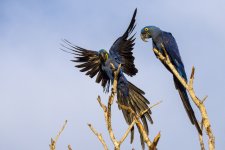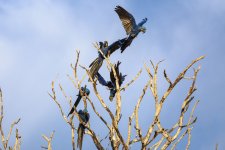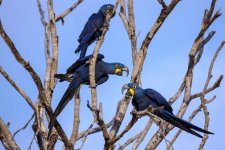kitefarrago
Well-known member
In August last year I joined a trip to the Pantanal, covering both the Southern and Northern part. As usual I couldn't get any of my friends to join me and so I went for an organized tour. Doing both the Southern and the Northern part of the Pantanal independently would require either a lot of money or a lot of time, since the two areas are not connected by road. I liked the idea of sampling both.
This was advertised as a small group photo trip. In my experience photo trips tend to spend longer in one location than is optimal to maximize species yield, and they certainly spend more time with good sightings, although there were only a handful of occasions where we had prolongued sightings of anything noteworthy.
The big draw was the opportunity to observe (and photograph) jaguars in the Pantanal, with a supporting cast of numerous birds and other mammals.
There were five of us, three `photographers' in the parlance of these tour, and two accompanying spouses. The latter were interested in wildlife, but didn't have the same intensity as their husbands, and just enjoyed what came our way.
The main tour was scheduled to be a 12 day trip (from Sao Paulo), and I asked whether it would be possible to extend the trip by visiting another location, to make the long journey from Europe worthwhile. We ended up with a four day extension designed to give us an introduction to the Atlantic rain forest. Location was somewhat restricted by keeping travel times from and to Sao Paulo manageable. One of the two couples joined the extension as well.
We lost a fair amount time in the field by the airlines messing us about (three half days), but of course this was beyond the control of anybody on the trip.
The weather was unusually hot for the season (winter). Photographers usually have a siesta in the early afternoon because the light is horrible for taking photos. I usually like to spend such time pottering about in the vicinity of the accommodation, but temperatures increasing to the high thirties put paid to that for the most part on this trip.
I had chosen to fly with TAP which provided the shortest journey times by some margin. The actual flights were fine but I had reasons to regret this choice. When I arrived in Lisbon in the early evening on my way out I was informed that my onward overnight flight to Sao Paulo had been cancelled (no reason was given). We were then made to wait for an inordinate amount of time, and sent on a wild goose chase across the airport, with no information on what to expect.
Eventually we were given boarding passes for the first flight next morning, and eventually reached a hotel close to midnight. I sent a text message and an email to Octavio, our guide, to let him know that I wouldn't be able to make our 10.00 meeting. For reasons I still haven't understood I hadn't received his responses by the time the wake-up call at 5.30 shrilled to my room, and when I boarded the aircraft I was worried about what to expect on the other end. This is one of the disadvantages of booking with a small outfit local to the destination, but apart from this I was extremely happy with my choice.
Fortunately eventually Octavio, the other two guests and I met up on the other end, and after I had apologized to everybody, around five hours late, the four of us set off towards Ubatuba on the coast.
By the time we arrived it was dark, and the planned half day of birding there had to be canned. After dinner I fell into bed, completely exhausted, but very happy that the holiday could now start.
This was my first journey to anywhere in the Americas south of Mexico, and I was apprehencive regarding the number of new families, let alone birds, on a non-birding trip. I also hadn't been able to find as much time to prepare as I would have liked, and I had resigned myself to the idea that there would be a lot of glimpses of birds that I wouldn't be able to identify.
Fortunately for me Octavio turned out to be a keen birder who worked extremely hard to show me as many birds as was humanly possible, educating me in their identification at the same time. Since this wasn't a birding trip I kept my own daily list, although Octavio kindly sent me a trip list without dates of sightings, which would at least allow me to weed out anything that I had misremembered or misunderstood.
We met for our first birding walk at first light, sticking to the grounds of the resort where we were staying. This is the off-season in Brazil, so this place, usually frequented by locals, was fairly empty. The grounds had trails cut through forest that ran right down to the sea, but for this early stroll we just went down to the local stream,
It was still fairly dark, so photography wasn't really an option while we suveyed the lay of the land, found some members of the heron family in the form of Snowy Egret, Little Blue and Boat-billed Heron and Black-crowned Night Heron, Double-collared Seed-eaters in reed bed, a Neo-tropic Cormorant, Grey-necked Wood Rail and Southern Rough-winged swallows. There was a Southern lapwing, and some of the usual common birds were now becoming active, such as Great Kiskadee, Picazuro Pigeon, Ruddy Ground-dove, Saffron Finch, Black-cheeked Gnatcatcher, Cattle Tyrant and Social Flycatcher.
As the light improved, we spotted a White-barred Piculet and a Masked Water Tyrant was parading at the stream side. Photography was becoming possible, and we took advantage of that. Octavio had warned us that these four days shouldn't be considered as a photo trip, but occasionally there were good opportunities and some of my favourite pictures from the trip come from these days (mostly hummingbirds).
On the way back we had a look at the feeders, not all of which had been stocked yet, and found mostly tanagers, in the form of Ruby-crowned, Brazilian, Green-headed, Red-necked, Azure-shouldered as well as the ubiquitous Bananaquits.
Masked Water Tyrant
White-barred Piculet
Brazilian Tanager female
Brazilian Tanager male
squirrel species
Andrea
This was advertised as a small group photo trip. In my experience photo trips tend to spend longer in one location than is optimal to maximize species yield, and they certainly spend more time with good sightings, although there were only a handful of occasions where we had prolongued sightings of anything noteworthy.
The big draw was the opportunity to observe (and photograph) jaguars in the Pantanal, with a supporting cast of numerous birds and other mammals.
There were five of us, three `photographers' in the parlance of these tour, and two accompanying spouses. The latter were interested in wildlife, but didn't have the same intensity as their husbands, and just enjoyed what came our way.
The main tour was scheduled to be a 12 day trip (from Sao Paulo), and I asked whether it would be possible to extend the trip by visiting another location, to make the long journey from Europe worthwhile. We ended up with a four day extension designed to give us an introduction to the Atlantic rain forest. Location was somewhat restricted by keeping travel times from and to Sao Paulo manageable. One of the two couples joined the extension as well.
We lost a fair amount time in the field by the airlines messing us about (three half days), but of course this was beyond the control of anybody on the trip.
The weather was unusually hot for the season (winter). Photographers usually have a siesta in the early afternoon because the light is horrible for taking photos. I usually like to spend such time pottering about in the vicinity of the accommodation, but temperatures increasing to the high thirties put paid to that for the most part on this trip.
I had chosen to fly with TAP which provided the shortest journey times by some margin. The actual flights were fine but I had reasons to regret this choice. When I arrived in Lisbon in the early evening on my way out I was informed that my onward overnight flight to Sao Paulo had been cancelled (no reason was given). We were then made to wait for an inordinate amount of time, and sent on a wild goose chase across the airport, with no information on what to expect.
Eventually we were given boarding passes for the first flight next morning, and eventually reached a hotel close to midnight. I sent a text message and an email to Octavio, our guide, to let him know that I wouldn't be able to make our 10.00 meeting. For reasons I still haven't understood I hadn't received his responses by the time the wake-up call at 5.30 shrilled to my room, and when I boarded the aircraft I was worried about what to expect on the other end. This is one of the disadvantages of booking with a small outfit local to the destination, but apart from this I was extremely happy with my choice.
Fortunately eventually Octavio, the other two guests and I met up on the other end, and after I had apologized to everybody, around five hours late, the four of us set off towards Ubatuba on the coast.
By the time we arrived it was dark, and the planned half day of birding there had to be canned. After dinner I fell into bed, completely exhausted, but very happy that the holiday could now start.
This was my first journey to anywhere in the Americas south of Mexico, and I was apprehencive regarding the number of new families, let alone birds, on a non-birding trip. I also hadn't been able to find as much time to prepare as I would have liked, and I had resigned myself to the idea that there would be a lot of glimpses of birds that I wouldn't be able to identify.
Fortunately for me Octavio turned out to be a keen birder who worked extremely hard to show me as many birds as was humanly possible, educating me in their identification at the same time. Since this wasn't a birding trip I kept my own daily list, although Octavio kindly sent me a trip list without dates of sightings, which would at least allow me to weed out anything that I had misremembered or misunderstood.
We met for our first birding walk at first light, sticking to the grounds of the resort where we were staying. This is the off-season in Brazil, so this place, usually frequented by locals, was fairly empty. The grounds had trails cut through forest that ran right down to the sea, but for this early stroll we just went down to the local stream,
It was still fairly dark, so photography wasn't really an option while we suveyed the lay of the land, found some members of the heron family in the form of Snowy Egret, Little Blue and Boat-billed Heron and Black-crowned Night Heron, Double-collared Seed-eaters in reed bed, a Neo-tropic Cormorant, Grey-necked Wood Rail and Southern Rough-winged swallows. There was a Southern lapwing, and some of the usual common birds were now becoming active, such as Great Kiskadee, Picazuro Pigeon, Ruddy Ground-dove, Saffron Finch, Black-cheeked Gnatcatcher, Cattle Tyrant and Social Flycatcher.
As the light improved, we spotted a White-barred Piculet and a Masked Water Tyrant was parading at the stream side. Photography was becoming possible, and we took advantage of that. Octavio had warned us that these four days shouldn't be considered as a photo trip, but occasionally there were good opportunities and some of my favourite pictures from the trip come from these days (mostly hummingbirds).
On the way back we had a look at the feeders, not all of which had been stocked yet, and found mostly tanagers, in the form of Ruby-crowned, Brazilian, Green-headed, Red-necked, Azure-shouldered as well as the ubiquitous Bananaquits.
Masked Water Tyrant
White-barred Piculet
Brazilian Tanager female
Brazilian Tanager male
squirrel species
Andrea
Attachments
Last edited:




